Today Current Affairs: 21st September 2022 for UPSC IAS exams, State PSC exams, SSC CGL, State SSC, RRB, Railways, Banking Exam & IBPS, etc
Table of Contents
National Logistics Policy 2022:
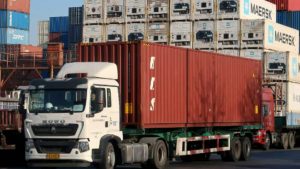
The Government has launched a National Logistics Policy (NLP) 2022, aiming to achieve ‘quick last-mile delivery’, end transport-related challenges.
- Logistics encompasses planning, coordinating, storing, and moving resources —people, raw materials, inventory, equipment, etc., from one location to another, from the production points to consumption, distribution, or other production points.
- The term “logistics” describes the total process of controlling the acquisition, storage, and delivery of resources to their intended location.
- It entails locating potential distributors and suppliers and evaluating the viability and accessibility of such parties.
- The policy focuses on key areas such as process re-engineering, digitisation, and multi-modal transport.
- It is a crucial move as high logistics cost impacts the competitiveness of domestic goods in the international market.
- The need for a national logistics policy was felt since the logistics cost in India is high as compared to other developed economies.
- Logistics costs have to be cut by half to be near global benchmarks by 2030 by reducing the cost of logistics from 14-18% of GDP to global best practices of 8%.
- Countries like the US, South Korea, Singapore, and certain European nations have such a low logistics cost-to-GDP ratio.
- The current cost is 16% of GDP.
- Being the 5th largest economy in the world, India aims to be among the top 10 in the LPI (Logistics Performance Index) by 2030. It has to match the pace of South Korea.
- In 2018, India was ranked 44th in the LPI.
- Creating data-driven Decision Support Systems (DSS) to enable an efficient logistics ecosystem.
- The policy’s target is to ensure that logistical issues are minimised, exports grow manifold, and small industries and the people working in them benefit significantly.
Indian Swachhata League:
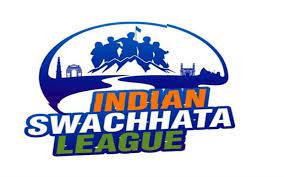
SBM-Urban 2.0’s maiden edition of ‘Indian Swachhata League’ has mobilized half a million youths and celebrities toward making cities clean, green, and garbage free.
- SBM-U 2.0, announced in Budget 2021-22, is the continuation of SBM-U’s first phase (launched from 2014 to 2019).
- The government is trying to tap safe containment, transportation, disposal of faecal sludge, and septage from toilets.
- It envisions to make all cities ‘Garbage Free’
- ensure grey and black water management in all cities other than those covered under AMRUT
- make all urban local bodies as ODF+
- make those with a population of less than 1 lakh as ODF++
- Timeline: over five years from 2021 to 2026
- Nodal Ministry: Ministry of Housing and Urban Affairs (MoHUA)
National Assessment And Accreditation Council:
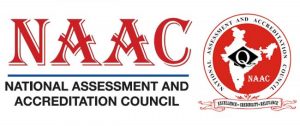
The National Assessment and Accreditation Council (NAAC), which carries out quality checks or assessments of Indian Higher-level Educational Institutions (HEIs), courted controversy recently over the rating of the Maharaja Sayajirao University of Baroda and allegations of bribery in the process.
- The NAAC, an autonomous body under the University Grants Commission (UGC), assesses and certifies HEIs with gradings as part of accreditation.
- Through a multi-layered process, a higher education institution learns whether it meets the standards of quality set by the evaluator in terms of curriculum, faculty, infrastructure, research, and other parameters.
- The ratings of institutions range from A++ to C. If an institution is graded D, it means it is not accredited.
- There are 1,043 universities and 42,343 colleges listed on the portal of the All India Survey on Higher Education.
- As per the latest data from June 21, there were 406 universities and 8,686 colleges that were NAAC-accredited.
- Among the states, Maharashtra accounts for the highest number of accredited colleges at 1,869 – more than twice as many as Karnataka’s 914, the second highest. Tamil Nadu has the most accredited universities at 43.
Typhoon Nanmadol:
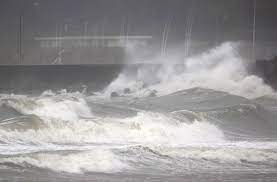
Typhoon Nanmadol, one of the biggest storms to hit Japan in years, killed at least two people and brought ferocious winds and record rainfall to the west of the country, causing transport disruptions and forcing manufacturers to suspend operations.
- Nanmadol made landfall near Kagoshima city late on Sunday before battering the western island of Kyushu and roaring onto the main island of Honshu on Monday morning.
- A typhoon is a mature tropical cyclone that develops between 180° and 100°E in the Northern Hemisphere.
- This region is referred to as the Northwestern Pacific Basin, and is the most active tropical cyclone basin on Earth, accounting for almost one-third of the world’s annual tropical cyclones.
Swachh Sujal Pradesh:
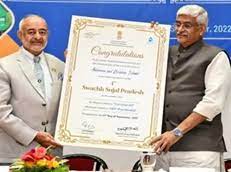
Andaman and Nicobar (A&N) Islands have got India’s 1st Swachh Sujal Pradesh certification (by Jal Shakti Ministry).
- The certification is provided for ensuring 3 things:
- Safe and secure drinking water supply,
- ODF Plus status,
- awareness about cleanliness and convergence of schemes.
- All the villages of A&N islands have received Har Ghar Jal Certification.
International Year Of Millets (IYOM) 2023:

FAO side event on International Year of Millets (IYOM) 2023 was held during the Ninth Session of the Governing Body (GB-9) of the International Treaty (Food and Agricultural Organisation) being hosted by the Government of India in New Delhi.
- The side event on IYOM-2023 focussed on celebrating Millets’ farmers.
- To bring back millets and create domestic, and global demand and to provide nutritional food to the people, the Government of India decided to mark the National Year of Millets in 2018.
- In 2021, India proposed to United Nations for declaring 2023 as the International Year of Millets (IYOM).
- The proposal of India got support from 72 countries and United Nation’s General Assembly (UNGA) declared 2023 as the International Year of Millets.
Bogibeel Region:
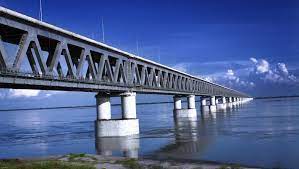
Union Minister of Ports, Shipping & Waterways (MoPSW), Sarbananda Sonowal launched multiple projects for the development of the Bogibeel region near Dibrugarh in Assam.
- The Two floating jetties at Bogibeel in Dibrugarh district and Guijan in Tinsukia district will be constructed as state-of-art terminals using the most advanced & updated technology.
- Both the jetties are being constructed by IWAI over the National Waterways – 2 (NW-2), popularly known as River Brahmaputra.
- He also inaugurated Bogibeel Riverfront Passenger Jetty which has been developed by the Northeast Frontier Railways (NFR) as part of Riverfront Development near the Bogibeel bridge.
- The Bogibeel Bridge is a combined road and rail bridge over the Brahmaputra River in the northeastern Indian state of Assam between Dhemaji district and Dibrugarh district.
India-Saudi Arabia Strategic Partnership Council:

Union Minister of Commerce and Industry, Shri Piyush Goyal visited Saudi Arabia from 18th to 19th September 2022 to attend the Ministerial meeting of the India-Saudi Arabia Strategic Partnership Council.
- The Strategic Partnership Council was instituted in October, 2019 during the visit of the Prime Minister of India to the Kingdom of Saudi Arabia and has two main pillars i.e. Political, Security, Social and Cultural Committee and the Committee on Economy and Investments.
- The notable outcomes of the Ministerial Meeting are:
- Streamlining efforts to realize the announcement made by His Royal Highness Crown Prince Mohammad Bin Salman, during his visit to India in February 2019, of investments worth USD 100 Billion in India.
- Endorsement of the 41 areas of cooperation identified by the technical teams under the 4 broad domains of Agriculture & Food Security; Energy; Technology & IT; and Industry & Infrastructure.
- Agreement to undertake implementation of the priority projects in a time bound manner. Priority areas of cooperation include:
- Collaboration in digital fintech sector through operationalization of UPI and Rupay Card in the Kingdom of Saudi Arabia.
- Re-affirmation of continued cooperation in joint projects including the West coast refinery, LNG infrastructure investment and development of strategic petroleum storage facilities in India
Global Registry Of Fossil Fuels:
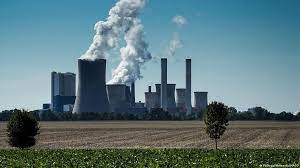
Climate campaigners have launched the world’s first registry of fossil fuel reserves, production and emissions.
- The Global Registry of Fossil Fuels is the first large-scale public database to track what is yet to be burned.
- Carbon Tracker, a nonprofit think tank that researches the energy transition’s effect on financial markets, and the Global Energy Monitor, which tracks a range of global energy projects, jointly developed the registry.
- These organizations hope the registry will empower groups to hold governments accountable in a range of scenarios, for example, when issuing licenses for fossil fuel extraction.
- The inventory includes data from more than 50,000 oil, gas and coal fields in 89 countries, covering 75 per cent of global production.
- With the Registry, it will be much easier to include expected future emissions into the analysis, and thus identify and prioritize the companies with the greatest risk of harbouring assets likely to become stranded.




